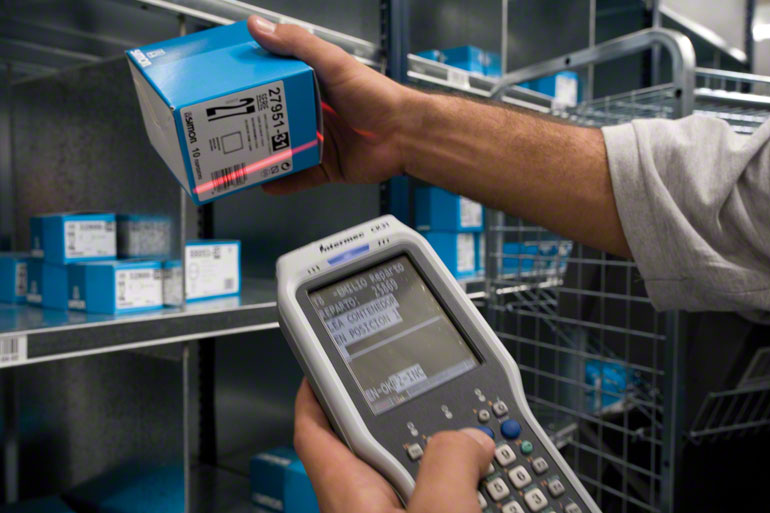Using barcode based warehouse technology is not limited to managing installations, the goods and communications with the operators. In addition, it is utilized to identify all items being handled or those picked off, for example, from wide span shelving.
At present, the vast majority of products have a recorded or printed barcode or integrated RFID chip (an identifier that uses radio frequency to transmit data). These systems allow each unit to be managed in the warehouse using laser or radio scanners, respectively.

Automatic identification of items in a warehouse streamlines picking work
These codes follow rigorous standardized rules on general use, which allow details such as the product in question, its manufacturer, its traceability, its logistical data, and its specific features to be ascertained. Understanding how these identifications work is essential to understanding how some operations in modern warehouses work.
Barcodes
This type of identification system consists of printing bars on labels (which are then affixed to the items) or on the packaging itself. These bars are generated in accordance with approved encoding standards (currently EAN-13 and EAN-128).
When barcodes are scanned (read) with a laser terminal, the terminal interprets the data and reports them to the management system. In addition to identifying items, this labelling system is used to identify locations on racks, as well as pallets and containers.
All automated systems for management and flows must have these codes so that data about the load being handled can be managed at any time.
RFID coding
This type of radio frequency identification of products, which involves attaching a chip to the product, has been gradually introduced over the last few years. When this label is within the action radius of a special aerial, the information contained in the chip is read automatically.
The great advantage of this system is the scanning speed, among other things, as there is no need for the label to be facing a reading system in a specific position. In terms of storage, the main benefit comes from the ease it provides in identifying the positions of units stored in their locations.

The big advantage of the RFID system compared to other systems is its scanning speed
1. Contact
2. Condenser
3. Microchip: Device that stores information on the product
4. Transmitter:. This can be low frequency, emitting radio waves of up to 6.6 ft (on average) or high frequency, whose transmission capacity can reach up to 328 ft.


